Introduction: The Importance of Daily Oral Care
Maintaining good oral hygiene is essential for a healthy mouth and overall well-being. While many people are aware of the basics—brushing, flossing, and visiting the dentist regularly—it’s easy to overlook the importance of consistency in daily oral care routines. By taking proactive steps every day, you can effectively avoid common dental issues such as cavities (tooth decay) and gum diseases (gingivitis and periodontitis). These conditions not only affect your smile but also your general health.
In this article, we will guide you through the essential daily habits that can prevent cavities and gum problems. We will also share practical tips to help you maintain optimal oral health for life.
1. Understanding Cavities and Gum Disease
Before diving into prevention, it’s important to understand how cavities and gum disease develop.
1.1 Cavities (Tooth Decay)
Cavities form when plaque, a sticky film of bacteria, builds up on your teeth. Plaque produces acids that erode tooth enamel, leading to holes in the tooth—also known as cavities. Cavities can worsen over time and lead to severe tooth pain, infection, or even tooth loss if not treated properly.
1.2 Gum Disease (Gingivitis and Periodontitis)
Gum disease begins when plaque builds up along the gum line, causing inflammation and infection in the gums. The first stage is gingivitis, which is reversible with proper care. If gingivitis progresses, it can develop into periodontitis, a more severe form of gum disease that can result in tooth loss.
2. Essential Daily Habits for Preventing Cavities and Gum Disease
2.1 Brushing Your Teeth Twice a Day
Why It’s Important: Brushing your teeth at least twice a day is the foundation of effective oral care. Brushing removes plaque and food particles that contribute to cavities and gum disease.
How to Do It Right:
- Use a soft-bristled toothbrush to avoid damaging your enamel and gums.
- Use fluoride toothpaste to strengthen enamel and prevent decay.
- Brush for at least two minutes—make sure you reach all surfaces: the outer, inner, and chewing surfaces of your teeth, as well as your tongue.
- Brush gently in circular motions. Avoid harsh scrubbing, which can wear down enamel and irritate your gums.
- Change your toothbrush or electric toothbrush head every three to four months or sooner if the bristles are frayed.
2.2 Flossing Daily
Why It’s Important: Brushing alone can’t reach the tight spaces between your teeth. Flossing removes plaque and food particles from between your teeth and along the gum line, which helps prevent cavities and gum disease.
How to Do It Right:
- Use about 18 inches of dental floss, and wrap the ends around your fingers.
- Gently slide the floss between your teeth and curve it into a “C” shape around each tooth, sliding it below the gum line.
- Don’t snap the floss or force it into tight spaces—this could cause gum damage or irritation.
- Be sure to floss every day, ideally before bed to remove food particles and plaque that have built up throughout the day.
2.3 Rinsing with Mouthwash
Why It’s Important: Mouthwash helps reduce bacteria in your mouth, freshens your breath, and provides added protection against plaque and gum disease. Some mouthwashes also contain fluoride to strengthen enamel.
How to Do It Right:
- Choose a fluoride mouthwash to help with cavity prevention or an antibacterial mouthwash to help reduce plaque and gingivitis.
- Use mouthwash after brushing and flossing to reach areas that brushing alone might have missed.
- Swish the mouthwash around your mouth for 30 seconds to 1 minute, ensuring it contacts all areas of your mouth.
2.4 Cleaning Your Tongue
Why It’s Important: The tongue harbors bacteria, which can contribute to bad breath and plaque buildup on your teeth. Cleaning your tongue is an often-overlooked step in oral hygiene.
How to Do It Right:
- Use a tongue scraper or the back of your toothbrush to gently scrape your tongue from back to front.
- Do this once a day, preferably in the morning before brushing your teeth, to eliminate bacteria and keep your mouth fresh.
3. Diet and Nutrition: Key to Preventing Cavities and Gum Disease
Your diet plays a significant role in your oral health. Certain foods can either help prevent or promote cavities and gum problems.
3.1 Choose Tooth-Friendly Foods
Why It’s Important: A balanced diet rich in vitamins and minerals supports healthy teeth and gums. Calcium, phosphorus, and vitamins A and C are particularly beneficial for oral health.
Good Choices:
- Dairy products (milk, cheese, and yogurt) for calcium and phosphorus, which strengthen enamel.
- Fruits and vegetables, especially crunchy ones like apples, carrots, and celery, which help clean your teeth naturally.
- Nuts and seeds that provide essential nutrients for gum health.
- Leafy greens such as spinach and kale, which are rich in vitamins that support gum health.
3.2 Avoid Sugary and Acidic Foods
Why It’s Important: Sugary and acidic foods promote the growth of bacteria in your mouth, leading to plaque buildup, cavities, and gum disease. The more frequently you eat sugary or acidic foods, the longer your teeth are exposed to damaging acids.
Foods to Limit:
- Soda, candy, and sugary snacks—These foods feed bacteria in your mouth, leading to plaque formation and cavities.
- Acidic foods and drinks (e.g., citrus fruits, coffee, vinegar, and soda)—These can erode enamel over time and increase tooth sensitivity.
3.3 Drink Plenty of Water
Why It’s Important: Drinking water throughout the day helps rinse away food particles and bacteria, reducing plaque buildup. Water also helps keep your mouth hydrated, which supports the natural production of saliva.
How to Do It Right:
- Drink water after meals to help wash away food debris.
- Swish water around your mouth if you can’t brush immediately after eating to neutralize acids and reduce plaque.
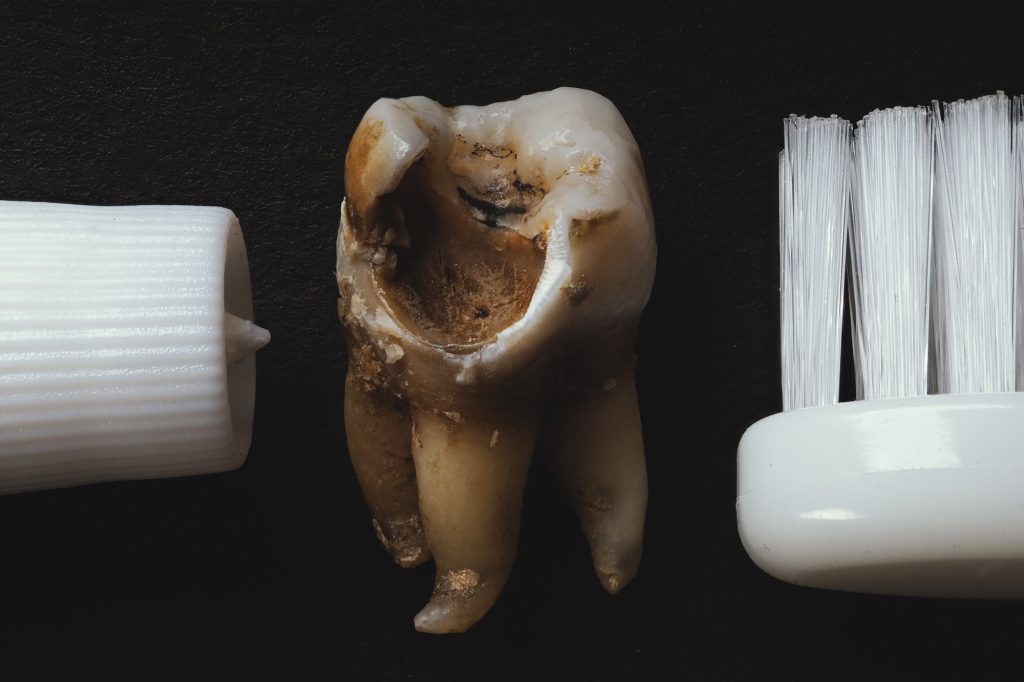
4. Regular Dental Checkups
Even if you follow an excellent daily oral care routine, regular dental checkups are essential for long-term oral health. Dentists can detect early signs of cavities, gum disease, or other dental problems that might not be noticeable to you.
4.1 Why They Matter
- Professional cleaning: Even with good at-home care, plaque can harden into tartar, which only a dentist or hygienist can remove.
- Early detection: Regular visits help identify potential problems early, preventing them from becoming more serious.
- Personalized advice: Your dentist can give you tips based on your unique oral health needs, such as specific products to use or techniques to improve your brushing or flossing.
4.2 When to Visit the Dentist
- Every 6 months for routine cleanings and exams.
- If you notice pain, bleeding gums, bad breath, or any changes in your teeth or mouth, see your dentist immediately.
5. Additional Tips for Preventing Cavities and Gum Disease
5.1 Avoid Smoking and Tobacco Use
Smoking and using tobacco products significantly increase the risk of gum disease and oral cancer. Tobacco weakens your immune system, making it harder to fight infections, and can cause your gums to recede.
5.2 Use Dental Sealants
Dental sealants are thin coatings applied to the chewing surfaces of your back teeth. They act as a barrier against plaque and cavities, especially in hard-to-reach areas. Ask your dentist if sealants are right for you or your children.
5.3 Use a Mouthguard for Sports or Teeth Grinding
If you play sports or grind your teeth at night, using a mouthguard can protect your teeth from damage. Grinding can lead to tooth wear, sensitivity, and gum recession, while a mouthguard can reduce the impact.
6. Conclusion: A Healthy Smile Starts with Daily Care
Preventing cavities and gum disease doesn’t have to be complicated. By adopting a consistent daily routine that includes brushing, flossing, rinsing, and choosing the right foods, you can keep your teeth and gums healthy for life.
However, don’t forget to schedule regular dental visits to catch any potential issues early and receive professional care. By following these simple steps, you’ll be well on your way to maintaining a bright, healthy smile that lasts a lifetime.

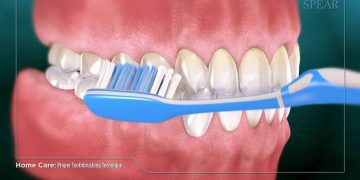
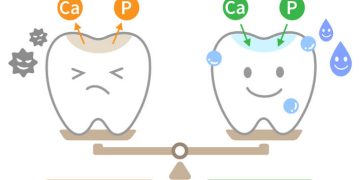
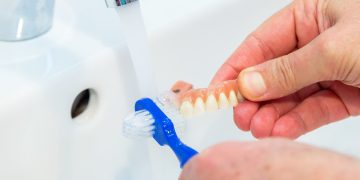


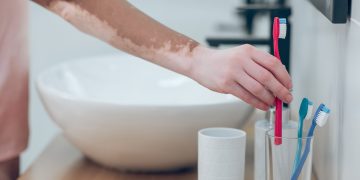
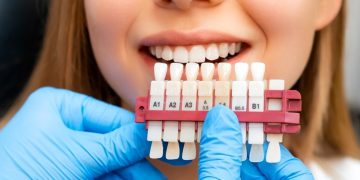
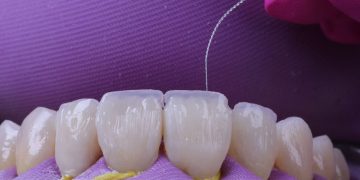
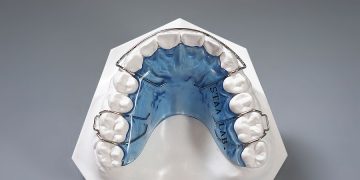

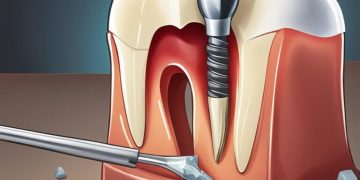

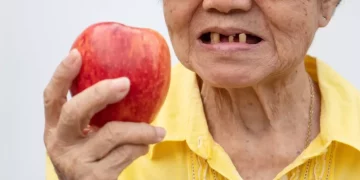

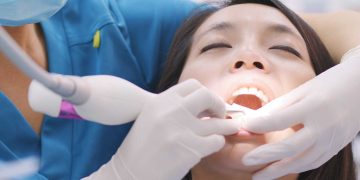

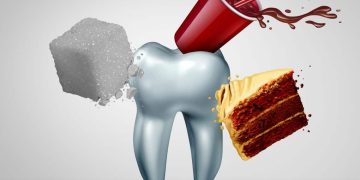







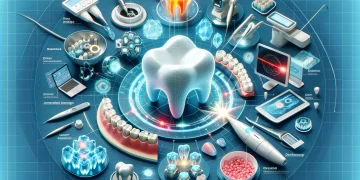


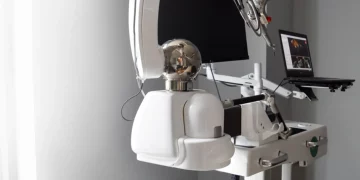

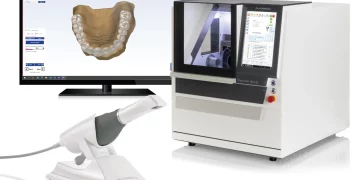
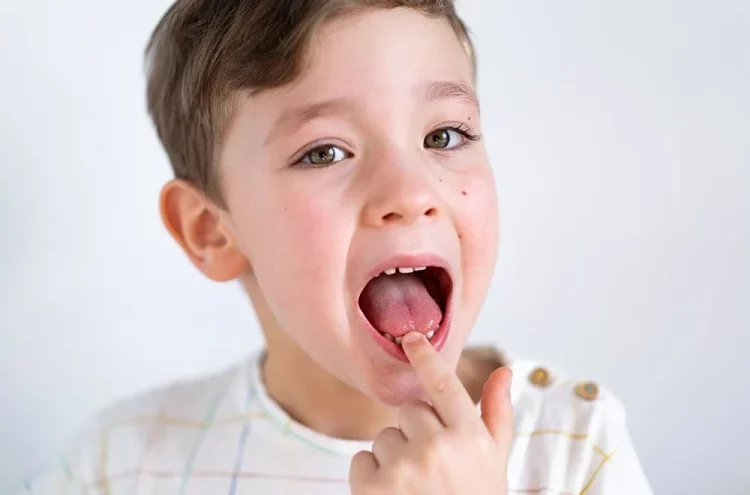












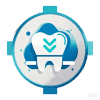
Discussion about this post